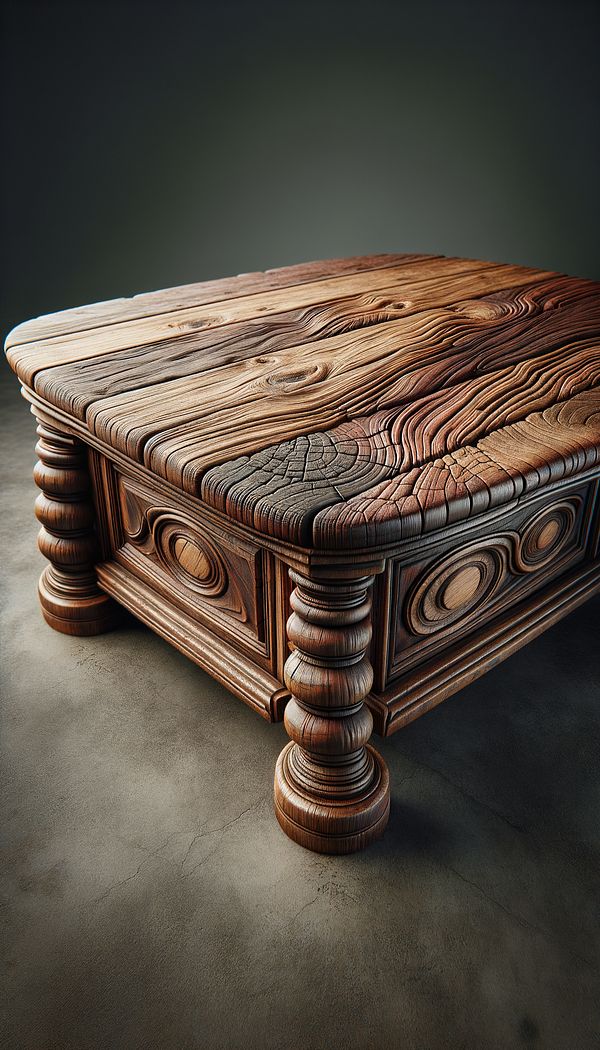What is an Antique Finish?
An antique finish refers to a surface treatment that gives an item the appearance of age and wear.
Description
An antique finish, also known as "antiquing," is a special type of surface finish that is applied to materials such as wood, metal, glass, or ceramic to give them a weathered, aged look. This technique can involve a range of processes including distressing, applying patinas, and using finishing techniques that highlight imperfections or simulate signs of wear and tear. The goal of an antique finish is to add character and historical depth to objects, making them appear as if they've been handed down through generations.
The beauty of using an antique finish in interior design lies in its ability to add warmth, texture, and a sense of history to a space. Whether incorporated through furniture, hardware, decorative objects, or architectural elements, an antique finish can blend seamlessly with a variety of design styles, from traditional to eclectic. It is especially popular in vintage and rustic design themes, but it can also be used to add an unexpected twist to more modern settings.
Creating an antique finish involves various techniques, depending on the material being treated. For example, wood can be distressed or painted then sanded at the edges to reveal the underlying layers. Metals might be oxidized or coated with a patina solution to create an aged effect. Each method requires a skilled hand and an understanding of the material to achieve a convincing and aesthetically pleasing result.
Usage
An antique finish is commonly seen on pieces of furniture, such as tables, chairs, and cabinets, giving them a time-worn charm. It's also applied to decorative objects like frames, mirrors, and lighting fixtures to bring a historical essence into modern interiors. Additionally, architectural details such as doors, trim, and exposed beams can be treated with an antique finish to enhance the overall aesthetic of a building's design.
FAQs
-
How does an antique finish differ from a distressed finish?
An antique finish and a distressed finish both aim to give an item an aged look, but they differ in techniques and results. An antique finish can include a variety of techniques including applying patinas and highlighting imperfections, while a distressed finish specifically involves physically damaging the surface to create signs of wear, such as scratches, dents, or worn edges.
-
Can an antique finish be applied to any material?
While an antique finish can be applied to a wide range of materials, including wood, metal, glass, and ceramic, the specific techniques used will vary depending on the material’s properties. Not all materials may be suitable for certain antiquing processes, and some require specific treatments to achieve the desired aged look.
-
Is it possible to create an antique finish on new items?
Yes, it's entirely possible to create an antique finish on new items. The process involves using various techniques to artificially age the item, giving it the appearance of something that has been worn over time. This can be a desirable effect for those looking to add vintage charm to new pieces.
Practical Application
To effectively apply an antique finish to your project, start by choosing the right material and method based on the look you’re aiming for. If working with wood, consider techniques like distressing and using layered paint applications. For metals, experiment with patinas and oxidation processes. Always test your method on a small, inconspicuous area first to ensure the desired effect. Remember, the key to a successful antique finish is patience and attention to detail, allowing each layer to dry thoroughly before applying the next.
-
Materials & Textiles360 articles
-
Furniture Types599 articles
-
Decorative Techniques322 articles
-
Decorative Objects240 articles
-
Wall Treatments & Finishes157 articles
-
Sussex ChairA Sussex Chair is a type of wooden armchair traditionally made from elm or beech.
-
SideboardA sideboard is a long, low piece of furniture used for storage and displaying items, traditionally found in dining rooms.
-
File CabinetA file cabinet is a storage unit with drawers or compartments designed for organizing and storing files and documents.
-
StrapworkStrapwork refers to a decorative motif featuring interlaced straps or bands.
-
What-NotA what-not is a piece of furniture incorporating open shelves for the display of ornaments.
